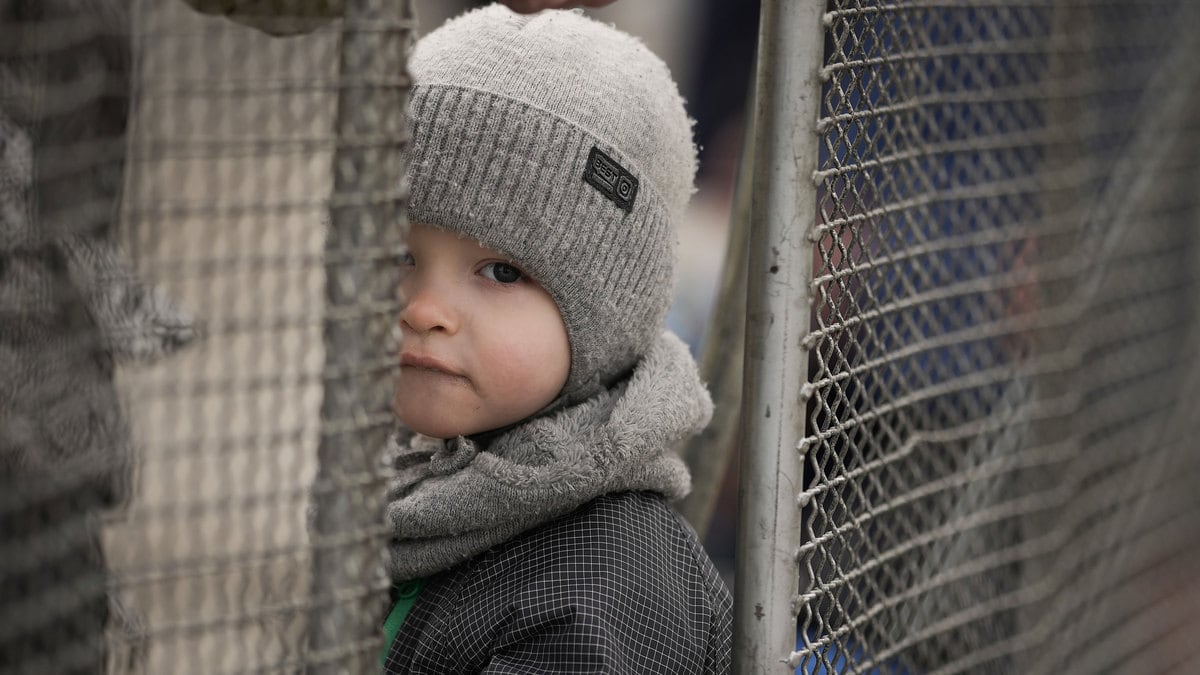As the Ukrainian city of Mariupol faced continued shelling from Russian forces, as many as 1,000 civilians—including women and an indeterminate number of children—took shelter in a theater located in the center of the besieged city. The word “CHILDREN” was visible from the air on both sides of the theater to indicate its status as a humanitarian safe zone for children and others. Russian forces deliberately bombed the theater leaving rescuers in a frantic search for survivors.
At this point the United Nations has estimated that more than 3 million people have already evacuated Ukraine, with millions more displaced within their own country—an unmitigated catastrophe consequent to an unprovoked invasion by the superpower next door. Among the evacuees are at least 1.5 million children who have seen their communities pummeled by Russian bombs, families separated, deaths of loved ones, infrastructure destroyed, educational disruption, and now face a future filled with fear and uncertainty.
The fact that the Russian invasion has now devolved from a military incursion to a genocidal flattening of civilian neighborhoods adds to a sense of random danger that cannot be predicted or controlled. This is precisely why protecting safe humanitarian evacuation routes has become so urgent.
According to UNICEF, more than 3,000 children are leaving Ukraine every hour. Despite the continuous bombardments and ground fire from Russian troops, the fact that the Ukraine government, local NGOs, NATO nations, and a slew of international organizations have been able to bring so many children and families to relative safety is remarkable. But estimates suggest that an additional 3 million children under the age of 15 remain in harm’s way as Russian forces indiscriminately lay siege to the country.
So what becomes of children evacuated under such dire conditions, particularly as escape corridors continue to be considered fair targets by Russian forces?
Under the best of circumstances, large-scale evacuations are extraordinarily challenging, logistical nightmares replete with unanticipated pitfalls. In Ukraine, the problems are particularly complicated.
Traffic jams and constant fighting are slowing the ability of Ukrainians to reach the borders by car or bus, while trains are desperately overcrowded as evacuees bring what few belongings they can. With men between the ages of 18-60 conscripted to serve in militia units, family disruptions add to the emotional trauma for children already anxious and fearful about what’s coming next.
Ukraine also has thousands of children with serious disabilities who must be brought to safety, along with some 100,000 orphans and kids in foster facilities who must be cared for. Some will make it to the U.S., Western Europe—or any place where they may have relatives who can take them in. But no matter where evacuees are headed, the journey is arduous and fraught with danger.
Just reaching the border does not necessarily end the risk for evacuees. Chaos at border crossings gives cover to human traffickers who lure and exploit unaccompanied children. Aerial Recovery, an NGO consisting of U.S. military veterans, focuses on making sure that orphans and youth who had been in foster facilities arrive safely across the border, under the watchful eyes of authorities in host countries. Still, Aerial Recovery estimates that as many as 5,000 Ukrainian children and adolescents are currently unaccounted for.
Many people, including children, who must evacuate their homes and communities will potentially require medical care along the way or at least a supply of medications needed to treat chronic illnesses like diabetes or asthma. It’s not clear how such support can be available when needed under wartime conditions. More complicated medical situations, like juvenile cancer patients (whose illness is being managed under strict chemotherapy or radiation treatment protocols), may have disruptions of care that put them at high risk.
Whether it’s a temporary stopover in Hungary en route to family in the U.K, or a semi-permanent relocation in Poland, no fleeing family can count on returning to their home in Ukraine any time soon, especially if their community had been targeted by the Russians. That means that housing, a source of income, medical care, and getting the kids back to school will present significant challenges in the host communities—especially complicated by serious language barriers.
So, what’s to be done?
First of all, it is important to acknowledge how much aid organizations and private efforts are doing to provide food, water, temporary shelter, and safety for so many Ukrainians trying to escape.
But mental health support (psychological first aid) for children among evacuees is also crucial. Leaving behind cherished belongings, friends, and beloved pets adds to the sense of disorientation and loss. For younger children, in particular, the reassurance of a parent or close relative is essential and comforting. So are favorite toys that can be taken along. Appropriately-trained aid workers can assist families and older children in terms of understanding what’s happening, where they’re headed, and that everything will be done to keep them safe. Even a brief phone call with the Dad who had to stay behind might briefly lift their spirits.
Organized programs for children can be an effective antidote for chaos and fear for kids of all ages. Answering questions of older children and adolescents with honesty, and as much detail as appropriate for the child’s age, is good advice. And physical closeness and hugs from a parent can help children cope.
For the longer term, it is essential that every child’s educational trajectory be re-established as quickly as possible. Prolonged educational disruption can easily sabotage a child’s future. This is, in fact, a major issue for refugee children anywhere.
We can only hope that the children of Ukraine will survive this nightmare of an unprovoked war and eventually move on, with their families, to rebuild their lives and create the future every child deserves.
This is Putin’s war, Ukraine’s sorrow, and it is now the world’s responsibility to protect the children caught in the brutal crossfire of geopolitics.








